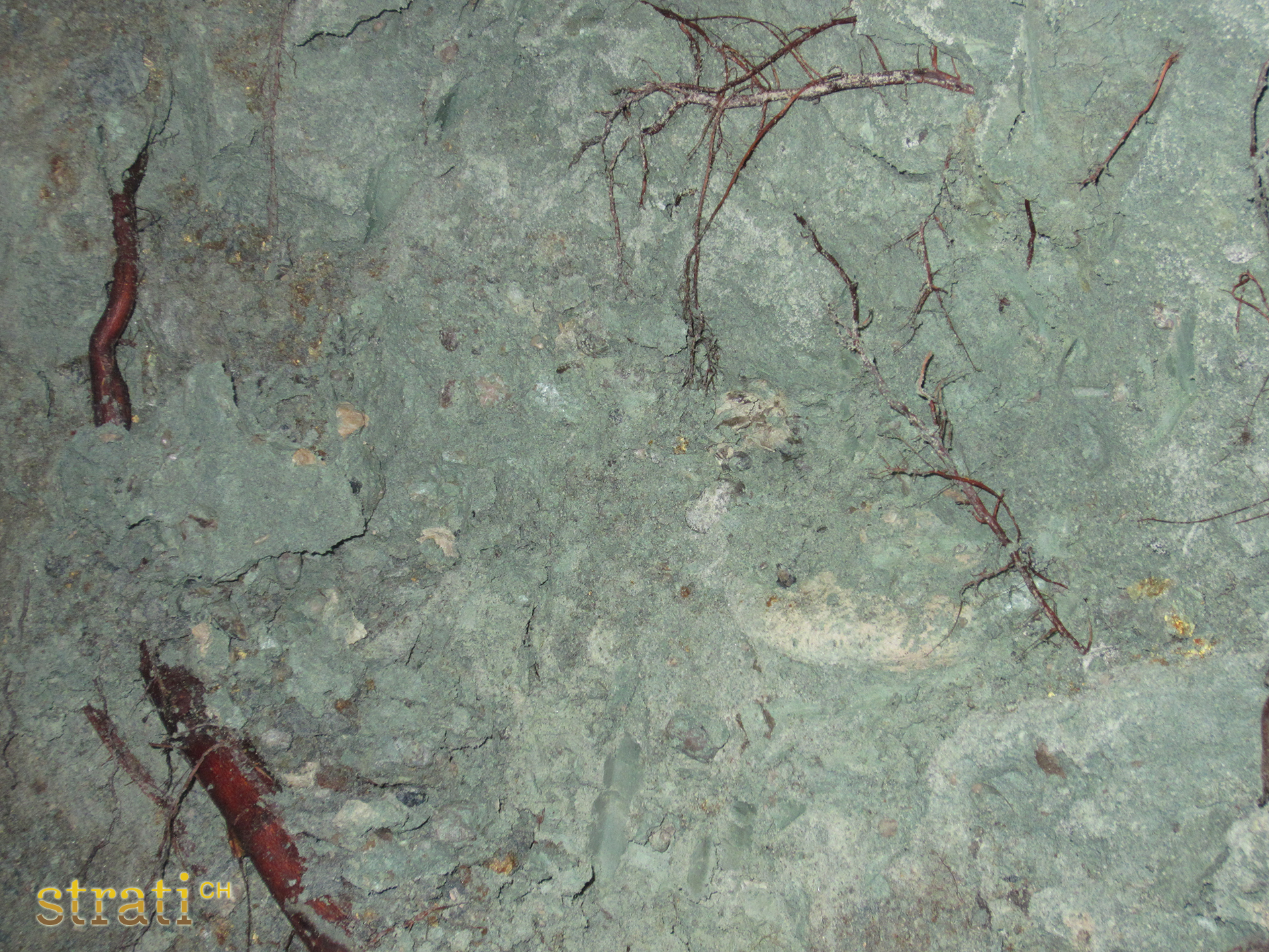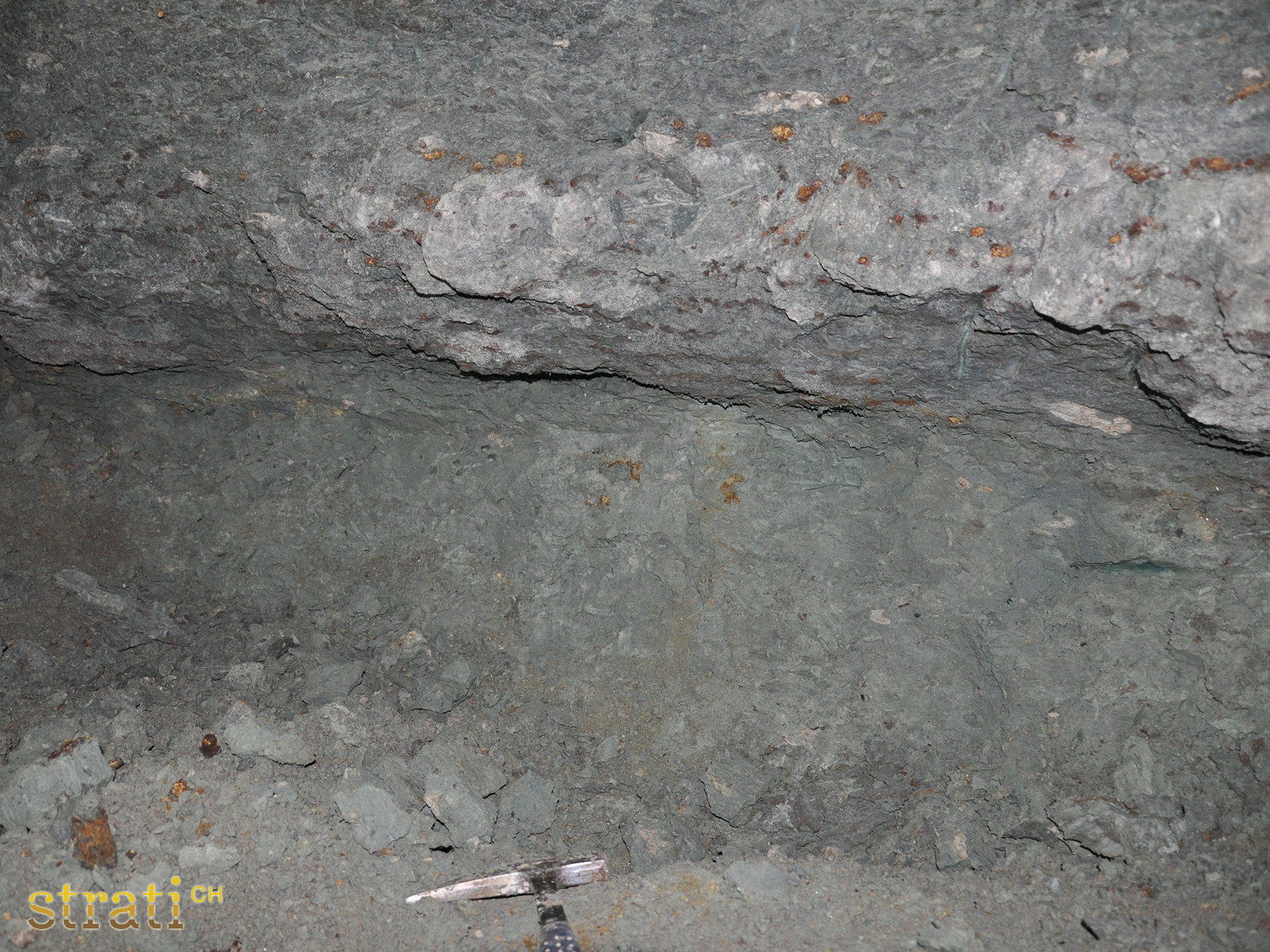Argile de La Presta
Back to JuraRepresentation and status
- Color RGB
- R: 245 G: 170 B: 170
- Rank
- lithostratigraphic Bed
- Validity
- Unit is in Use
- Status
- informal term
Nomenclature
- Deutsch
- La-Presta-Tonstein
- Français
- Argile de La Presta
- Italiano
- Argilla della Presta
- English
- La Presta Claystone
- Origin of the Name
-
La Presta (NE), Val de Travers
- Historical Variants
-
gisement d'Albien du Baliset = argiles albiennes = argile panachée (Schardt & Dubois 1905), Marnes pyriteuses (Rollier 1912a), Marnes de la Presta, Presta Beds (Pictet et al. 2016)
Links
- Synonyms
Description
- Thickness
- Max. 1 m dans la région de Bellegarde-sur-Valserine, env. 12,5 m dans la région de Sainte-Croix et près de 30 m à La Presta.
Hierarchy and sequence
- Superordinate unit
- Units at roof
- Units at floor
Age
- Age at top
-
- Middle Albian
- Note about top
-
Début de l'Albien moyen: Zone à Acanthoplites intermedius
- Age at base
-
- Early Albian
- Note about base
-
Fin de l'Albien précoce: Zone à Acanthoplites intermedius (+ fossiles remaniés de la Zone à O. subhili)
- Dating Method
-
Biostratigraphie des ammonites (Pictet in prep.)
Geography
- Geographical extent
- Jura neuchâtelois (La Presta, Le Baliset/Rochefort), Jura méridional (Bellegarde-sur-Valserine).
- Type area
- Val-de-Travers (NE)
Palaenography and tectonic
-
- Cretaceous of the Jura Mountains
- Tectonic unit (resp. main category)
-
-
Jura
:
Juragebirge
-
Jura
:
- Kind of protolith
-
- sedimentary
- Metamorphism
- non metamorphic
References
- Definition
-
(2016) :
The Perte-du-Rhône Formation, a new Cretaceous (Aptian-Cenomanian) lithostratigraphic unit in the Jura mountains (France and Switzerland). Swiss J. Geosc. 109/2, 221-240
From the base to the top of the Mussel Mb, five subunits have been identified (Fig. 8).
The fourth one, the Presta Beds (S10, Figs. 4, 8j–k), is represented in the Meridional Jura by a 0–1 m thick green marly mudstone. In the Central Jura, it is a 0–30 m thick
grey clay. The Presta Beds contains a rich phosphatic or pyritized macrofauna mainly dominated by the necton (*26 ammonites taxa, Fig. 8l, Pictet and Roux 1847– 1854, Pictet and Campiche 1858–1871, Renz and Jung 1978; sharks).


